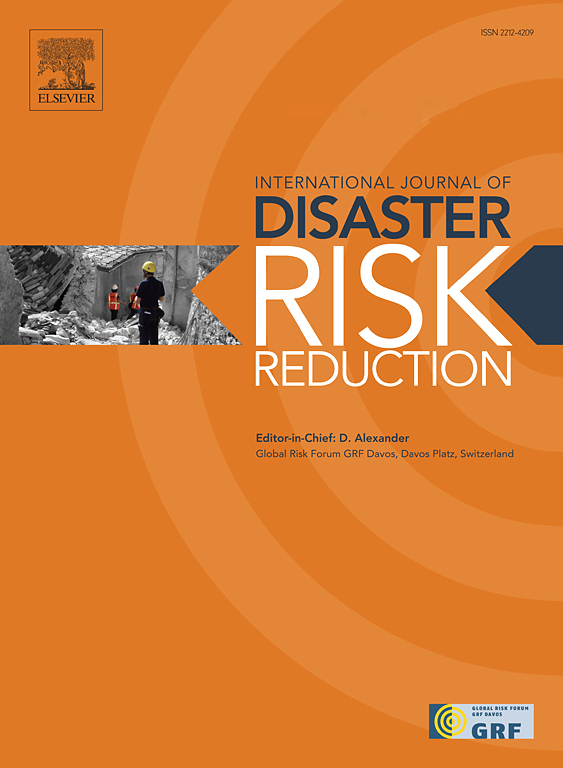Disaster resilience in the geohazard-prone mountainous areas: Evidence from the Hengduan Mountain, southwest China
IF 4.2
1区 地球科学
Q1 GEOSCIENCES, MULTIDISCIPLINARY
International journal of disaster risk reduction
Pub Date : 2025-03-01
DOI:10.1016/j.ijdrr.2025.105331
引用次数: 0
Abstract
Geohazards are threatening people's lives and property and exacerbating environmental degradation, particularly in mountainous areas. There is an increasing call for resilience building for disaster prevention and mitigation. Taking 99 counties in the Hengduan Mountain in Southwest China as an example, this study assesses county-level disaster resilience based on the modified Baseline Resilience Index for Communities (BRIC), proposes a threat-resilience-damage framework to categorize study areas into eight types, and utilizes coupling coordination model to identify strength and weakness of regional resilience system, and thus proposes quantified tailor-made resilience building strategies for different types of areas. It should be noted that regional disaster resilience is highly correlated with its subsystems' coupling coordination, jointly affecting a region's damage suffered from geohazards. Even in areas with low resilience, subsystems' coupling coordination can reduce losses through effective cross-system cooperation. On the contrary, regions with high resilience but low subsystems' coupling coordination may suffer severe damage in geohazards. Placing resilience in the context of regional geohazard realities and analyzing the coupling coordination of resilience subsystems can meet the needs of resilience construction under different geohazard scenarios and help to propose more precise strategies for disaster risk reduction and regional sustainable development.
求助全文
约1分钟内获得全文
求助全文
来源期刊

International journal of disaster risk reduction
GEOSCIENCES, MULTIDISCIPLINARYMETEOROLOGY-METEOROLOGY & ATMOSPHERIC SCIENCES
CiteScore
8.70
自引率
18.00%
发文量
688
审稿时长
79 days
期刊介绍:
The International Journal of Disaster Risk Reduction (IJDRR) is the journal for researchers, policymakers and practitioners across diverse disciplines: earth sciences and their implications; environmental sciences; engineering; urban studies; geography; and the social sciences. IJDRR publishes fundamental and applied research, critical reviews, policy papers and case studies with a particular focus on multi-disciplinary research that aims to reduce the impact of natural, technological, social and intentional disasters. IJDRR stimulates exchange of ideas and knowledge transfer on disaster research, mitigation, adaptation, prevention and risk reduction at all geographical scales: local, national and international.
Key topics:-
-multifaceted disaster and cascading disasters
-the development of disaster risk reduction strategies and techniques
-discussion and development of effective warning and educational systems for risk management at all levels
-disasters associated with climate change
-vulnerability analysis and vulnerability trends
-emerging risks
-resilience against disasters.
The journal particularly encourages papers that approach risk from a multi-disciplinary perspective.
 求助内容:
求助内容: 应助结果提醒方式:
应助结果提醒方式:


